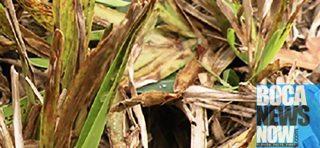|
Article Courtesy of Boca
News Now
By Litigation Desk
Published August 13, 2022
|
BOYNTON BEACH — The Valencia Reserve Homeowners Association, which represents
1060 homes in the “active adult” community on Lyons Road in Boynton Beach, is
suing its insurance company after an outbreak of “Sugarcane Mosaic Virus.”
|
The virus, which kills
grass and other vegetation — starting with a brown “mosaic”
but ultimately leaving dead lawns in its wake — is
problematic in Valencia Reserve, according to the complaint.
The Homeowners Association made an insurance claim under the
“pollution loss” section of its policy — seeking money to
mitigate the problem. But Beazley Insurance denied the claim
— valued at significantly more than the $30,000 statutory
minimum for suing in Palm Beach County Circuit Court. The
HOA’s suit against Beazley Insurance seeks unspecified
damages.
While non-specific about the area of infection, the Valencia
Reserve lawsuit presumably focuses on common areas in the
community. Individual homeowners are responsible for their
own homes and grounds. Beazley did not file an immediate
response. We
share this from the University of Florida Agricultural
Extension which published an informative guide to the impact
of Sugarcane Mosaic Virus in South Florida. |
|
St.
Augustine grass infected by Sugarcane Mosaic Virus, courtesy
University of Florida Plant Diagnostic Clinic.
|
“Early symptoms include a mosaic pattern on the leaf that becomes necrotic
(turns brown and dies prematurely) over time. According to Dr. Phil Harmon,
UF/IFAS Plant Diagnostic Center, the symptoms present blotchy and streaky
patterns of yellow and green color. In fact, turfgrass tends to have broken
yellow streaks running between the veins on an otherwise green blade. The
symptoms and dieback typically starts in the fall months of September and
October, and continues through the winter into spring. Some lawns may appear
to recover in the spring. Unfortunately, lawns that appear to recover
eventually die over a period of 1-3 years. Infected lawns may completely
dieback.”
|
